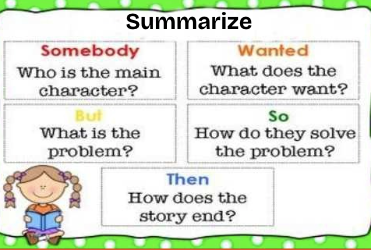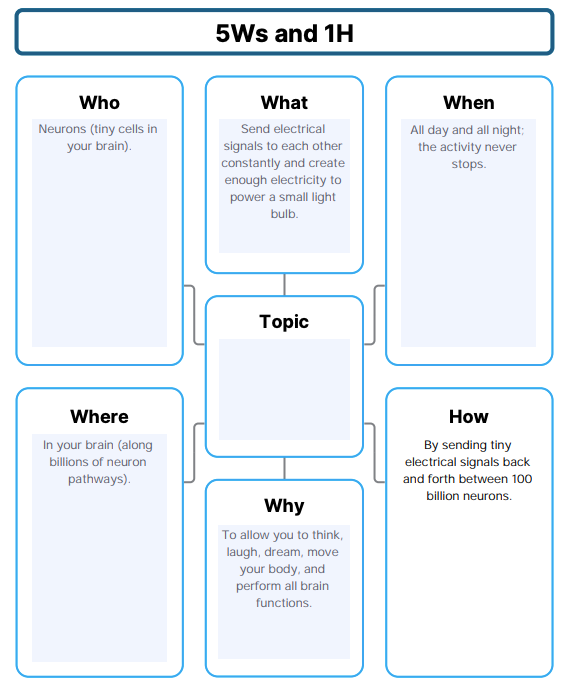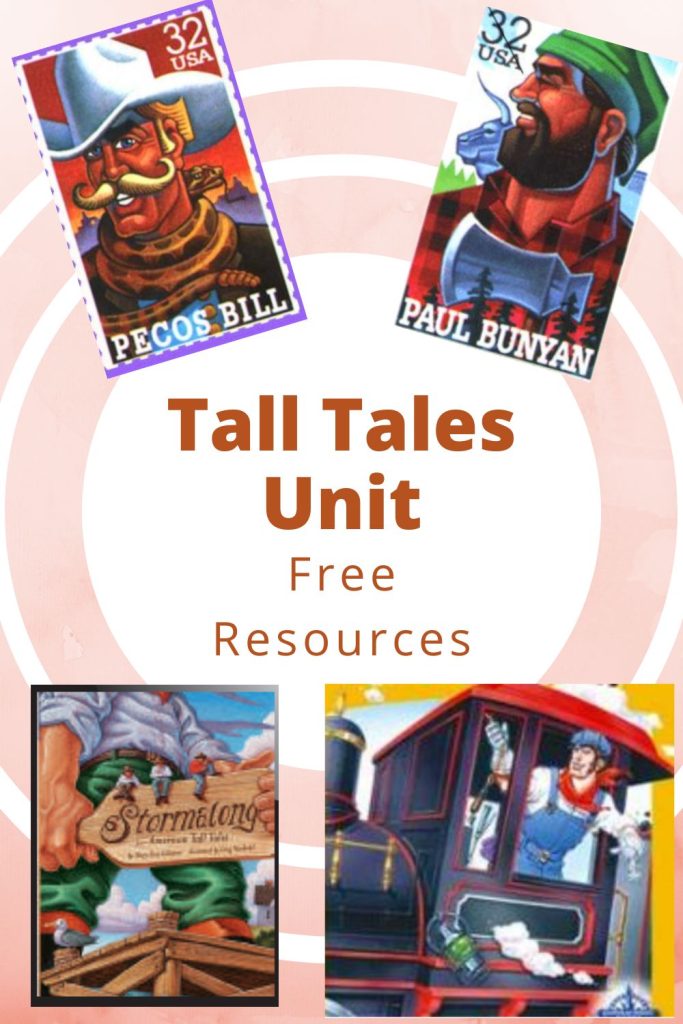Our post on reading comprehension tips provides free worksheets for each skill. This companion post is all about practicing those skills through simple, hands-on activities.
Main Idea and Supporting Details
Try: Main Idea Sentence Strips
Copy a short paragraph from a story or article and cut the sentences into strips. Include a few off-topic sentences. Have your child read all the strips and sort them into main idea and related details.
Create with an AI Tool: For this example, I copied a paragraph about the brain from a NatGeo article. (Or, you can tell the AI to generate a paragraph on any topic). I pasted the paragraph into Claude AI and told it to adjust the text for a 3rd grade level. Then, I told it to identify the main idea and three supporting details from the text, and to include some non-detail distractors. I put the result into this Google doc. It’s easy to make your own document, tailoring it to your child’s interests, grade level, or whatever it is you’re studying.
Recall and Sequencing
Try: Variations on Roll & Retell
Check out these suggestions for Roll & Retell games that go beyond the standard activity. Examples include visual scavenger hunts, and imagining variations to a story, like a plot twist, new character, or change in setting.
In another variation, a reader rolls and retells part of a story using a specific lens that encourages a more personal or analytical response. In this version, each die number prompts a different kind of connection (how the text relates to oneself, the world, or another text), prediction, question, or opinion. For Example: “Roll a 6 and retell a scene showing how it relates to something from real life.”
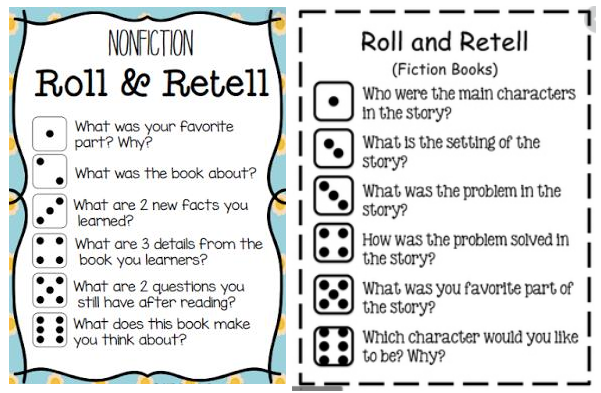
Summarizing
Try: Frameworks for Capturing and Condensing the Big Ideas
Sometimes it helps to use a guiding structure for distilling key events and themes. For fiction, you can use the Somebody, Wanted, But, So, Then format. For nonfiction (and fiction too), the old 5Ws and H format we learned for news writing can be employed for summarizing as well.
Summaries can be done verbally, or in a more game-like way that involves movement. (Something as simple as laying out index cards on the floor or posting them in different parts of a room, each labeled with a summary element, and having your kid hop to or move to each one and verbally summarize).

Visualizing
Try: Seeing the Words
Have your child describe or draw what he or she visualizes while reading descriptive passages. You can start small with single words or objects (like asking what they imagine a “dog” or “mountain” in a story looks like). Then you can build up to full scenes (“a busy marketplace”) and characters (“the old man with a long, gray beard and a twinkle in his eye”).
Click here for some drawing ideas and graphic organizers. Click here for more visualizing ideas.

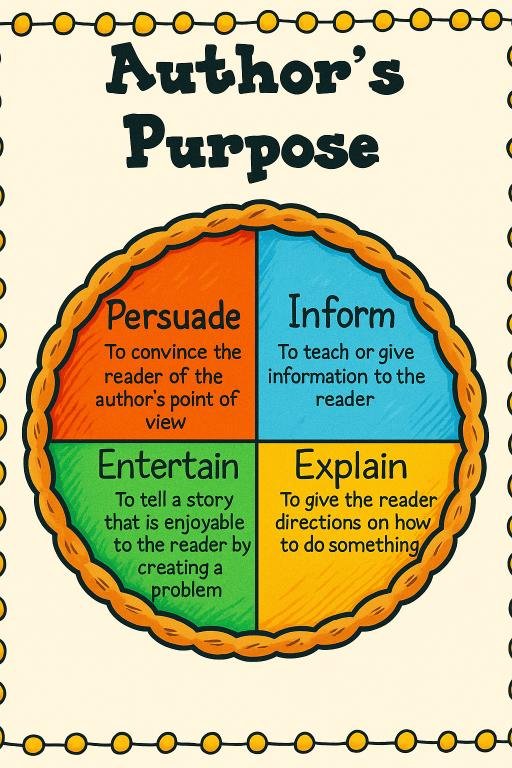
Author’s Purpose
Try: Pick a Piece of Pie
Determine the author’s purpose using a sorting activity like this one and this one. You can also discuss with your child how the author organized the text. (Was it a sequence, problem/solution, or compare/contrast structure?).
Here’s an online game for this skill.


